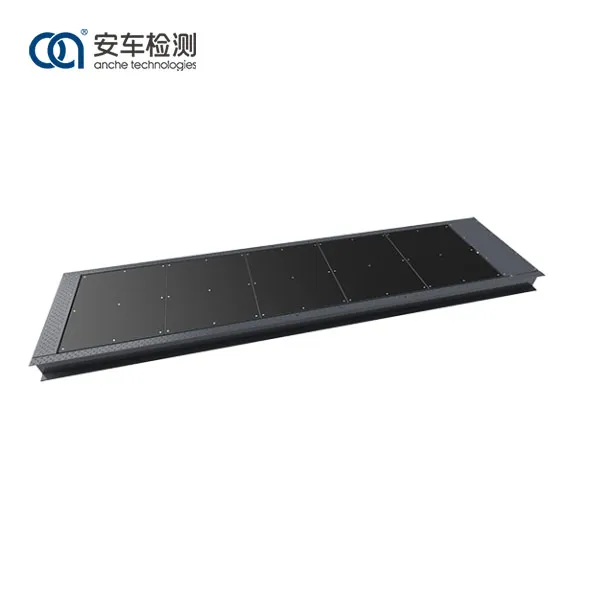What Types of Vehicles Can Be Tested Using a Plate Brake Tester
2024-10-23
When it comes to ensuring vehicle safety, brake testing is one of the most critical aspects. A plate brake tester is a specialized piece of equipment used to assess the braking performance of various types of vehicles. This tool is often found in inspection stations, automotive service centers, and workshops. But what types of vehicles can be tested using a plate brake tester? Let’s explore how this device works and the range of vehicles it can evaluate.
What is a Plate Brake Tester?
A plate brake tester measures the efficiency and balance of a vehicle’s braking system by using pressure-sensitive plates mounted on the ground. When the vehicle drives over the plates and brakes, the system calculates the force applied to each wheel, detecting any discrepancies between the left and right sides. This test is quick, non-invasive, and accurate, making it an essential tool for evaluating braking performance.
Types of Vehicles Tested Using a Plate Brake Tester
1. Passenger Cars
The most common use of plate brake testers is for passenger cars. Whether it’s a compact sedan, a mid-sized SUV, or a full-sized van, this equipment is well-suited for testing the braking efficiency of personal vehicles. The plate brake tester quickly identifies issues with braking balance, which could lead to uneven wear on brake components or loss of control during emergency stops.
- Benefits: Quick and reliable testing for everyday cars, ensuring compliance with safety standards.
2. Light Commercial Vehicles (LCVs)
Light commercial vehicles, such as pickup trucks, small delivery vans, and minibusses, can also be tested using plate brake testers. These vehicles often carry more weight than passenger cars, so it’s crucial to ensure their braking systems are working properly, especially under load. The plate brake tester can assess whether the brakes are distributing force correctly, which is vital for vehicles that transport goods or passengers.
- Benefits: Ensures that LCVs can stop efficiently and safely, even when carrying heavy loads.
3. Heavy-Duty Trucks
For heavy-duty trucks, braking systems are even more critical, given the immense weight these vehicles carry. Plate brake testers are designed to accommodate the weight and size of trucks, offering reliable brake testing for vehicles in the logistics, construction, and transportation industries. In many countries, heavy-duty trucks are required to undergo regular brake tests to ensure road safety.
- Benefits: Provides accurate measurements of braking force for trucks, enhancing road safety and reducing the risk of accidents.
4. Buses and Coaches
Public transportation vehicles such as buses and coaches are subject to rigorous safety inspections, and plate brake testers play a crucial role in these evaluations. For buses that transport dozens of passengers, a reliable brake system is non-negotiable. Plate brake testers provide precise data on the balance and efficiency of the brakes, helping to identify issues before they become dangerous.
- Benefits: Ensures that buses and coaches have safe, well-maintained brake systems, minimizing the risk of brake failure.
5. Trailers and Semi-Trailers
For trailers and semi-trailers, braking performance is critical, especially during deceleration or emergency braking when towing a heavy load. Plate brake testers help ensure that the brakes on these towed vehicles are working in sync with the primary vehicle, preventing accidents caused by brake imbalance or failure.
- Benefits: Prevents accidents by ensuring trailers and semi-trailers have balanced and functional brake systems.
The plate brake tester is a versatile tool used to test the braking performance of a wide range of vehicles, including passenger cars, light commercial vehicles, heavy-duty trucks, buses, and trailers. By identifying brake imbalances and inefficiencies, it helps maintain road safety and ensures that vehicles meet regulatory standards. Whether you operate a service center, inspection station, or fleet maintenance facility, plate brake testers are invaluable for ensuring the safety of the vehicles on the road.



